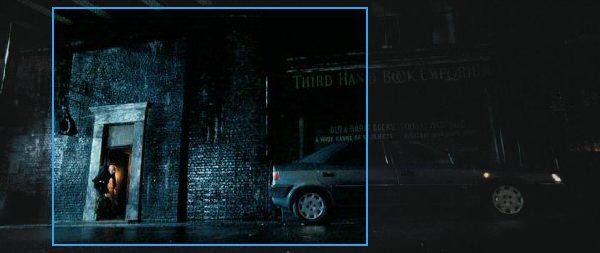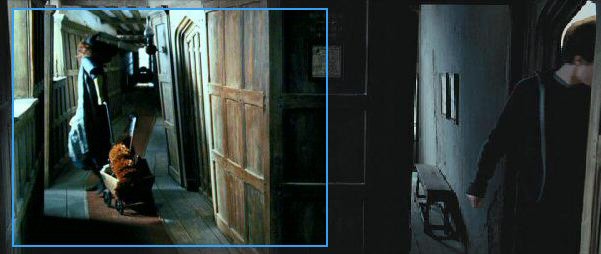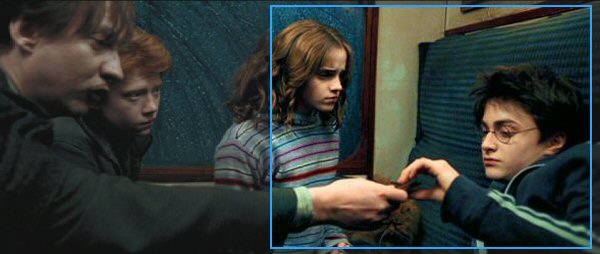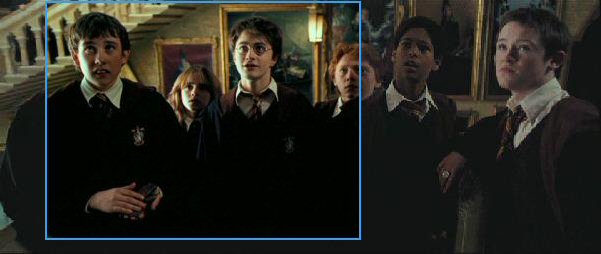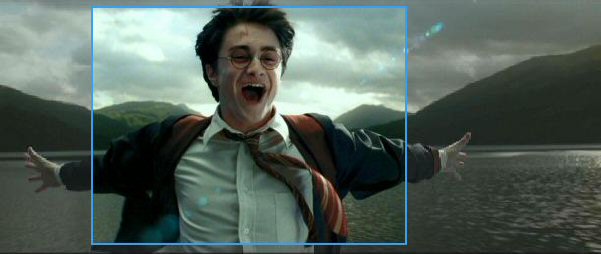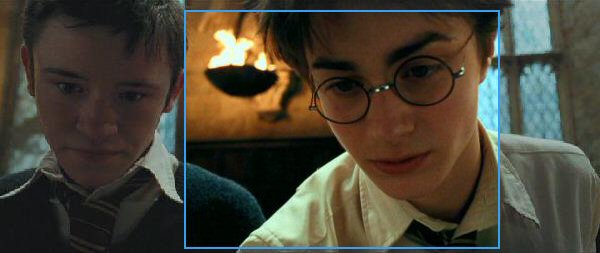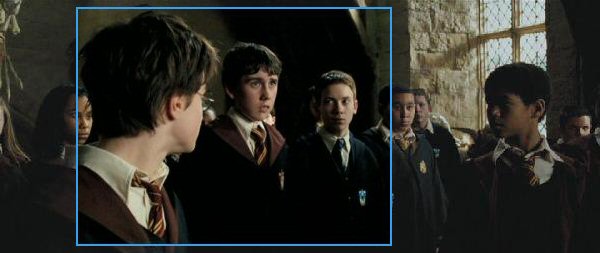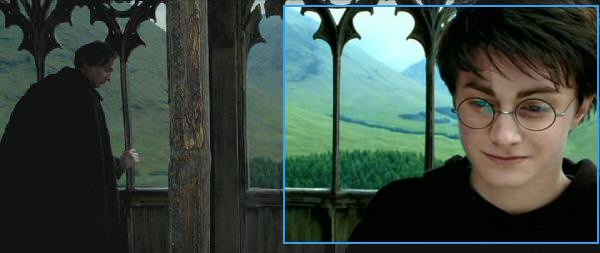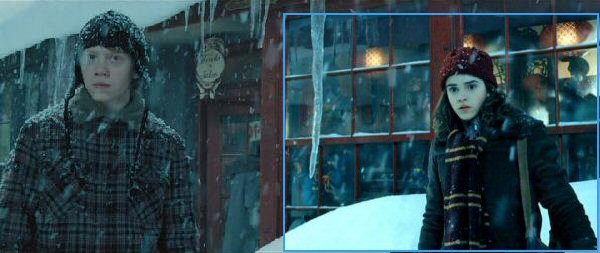1:14:39

How on earth does the fullscreen version of this shot get across the fact that Pettigrew is VERY close to Harry on the map (and getting closer)?
To answer my own question, I need to go into more detail and depart from the way this page is structured, so I've set up a separate page just about this image here (that page will allow you to return to this spot once you've seen what I have to say).
1:34:16

I took over 20 shots like this one in the Shrieking Shack, where I'm sure that the fullscreen version doesn't make it clear who's pointing what at whom and who's looking in whose direction.
I rest my case.
1:38:46

Seeing Lupin and Pettigrew scuffle as they leave the tunnel might not be the most important thing to see, but it should be there!
The three pairings on screen (Harry/Sirius; Lupin/Pettigrew and Ron/Hermione) are there for a reason, however subtle, and being limited to just one of them changes the dynamic of the scene.
1:46:00

Considering Ron's speaking, he should perhaps be on screen. But is he, in the fullscreen version?
Nope. Nowhere close. In fact, he may as well not have shown up.
1:49:25

The first of three scenes of Time-Turned Harry and Hermione which depend on our seeing both them and their "previous selves" on-screen at the same time. Do we? Of course not!
1:52:29

The second... (Although the fullscreen version has the time to pan across towards Harry and Hermione behind the tree and back again, interrupting what had been a natural, slow camera movement to the left with one to the right.)
1:53:39
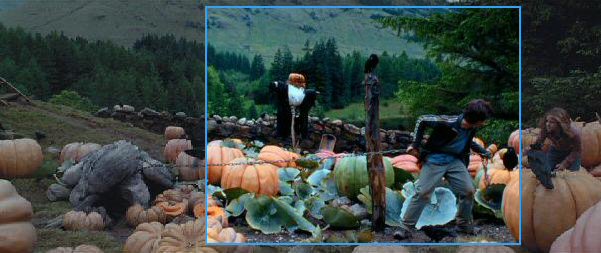
What is Harry supposed to be pulling?
The original widescreen shot pans towards the right, while the fullscreen focus pans towards the left. Does this make sense?
2:01:34
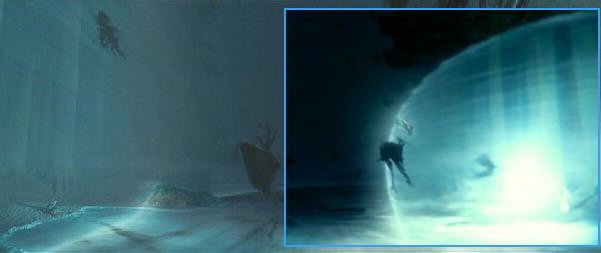
Note Harry and Sirius on the far left, and Patronus-casting-Harry on the far right...
... and only half of the Dementors!
2:09:48

What better shot with which to end this review but the beginning of the end credits? How much of that wonderful graphic made it to the fullscreen version?
Actually, all of it. I suppose I half-expected this, but considering the kind of person who's likely to be prepared to buy a butchered edition of a modern cinema movie is unlikely to be interested in the end credits, the fullscreen DVD edition displays the end credits in widescreen! With black bars, as you can see here.
This exemplifies something about fullscreen releases of widescreen movies which makes me angry. There is a requirement in the movie industry that the end credits must be included in their entirety on DVD or video releases. In cases like this one, where there are so many names, and the list meanders down, left, right and up at times, the only way to display all the names is to include the full width of the original widescreen design, which requires the inclusion of the dreaded "black bars" at the top and bottom of the screen. My issue is this: if it is considered important that all the people who worked on the movie get the recognition they rightly deserve (and which I certainly don't begrudge them), why does the movie industry allow their work to be decimated and degraded the way this movie does? It makes them look at best incompetent, and at worst fools!
Conclusions
The fullscreen version of Prisoner of Azkaban is an utter travesty. This is an example of panning and scanning at its very worst. I would suggest that anyone who has bought this version of this movie takes it back to the shop where they bought it and demand a refund on the basis of having been sold a defective product. Certainly, anyone who has only ever seen this movie in this format (and not, for instance, in a cinema) has not seen the same movie the rest of us saw. Some people say that the "widescreen debate" is an issue only for movie buffs and arty-farty conversation, that it's not relevant to action or "children's movies". In some cases, this may be true, but in this instance, seeing only half the image means that you're only seeing half the story, and I submit that some scenes in the fullscreen version actually don't make sense!
The only way around this is for consumers to demand proper widescreen releases of widescreen movies, and it seems to me that the main way this can come about is if we educate ourselves about the reasons for this. And that's the only reason I have taken the trouble to create this page. If I have managed to persuade a single person to change their mind, and to buy the widescreen edition rather than the fullscreen one, I will consider the time and effort well spent!







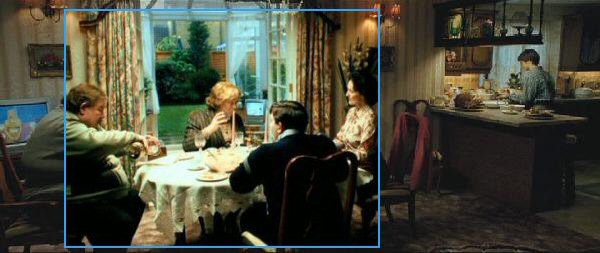
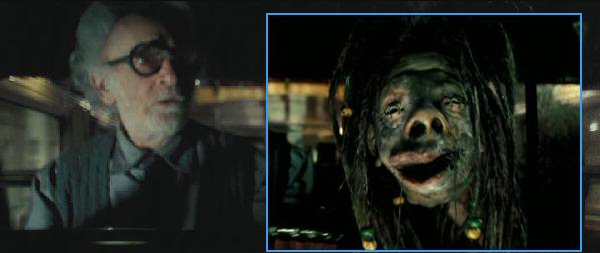 Very few HP fans like the idea of the Shrunken Heads in the movie. I wonder if the DVD technicians took the opportunity to remove this one from this shot?
Very few HP fans like the idea of the Shrunken Heads in the movie. I wonder if the DVD technicians took the opportunity to remove this one from this shot?
